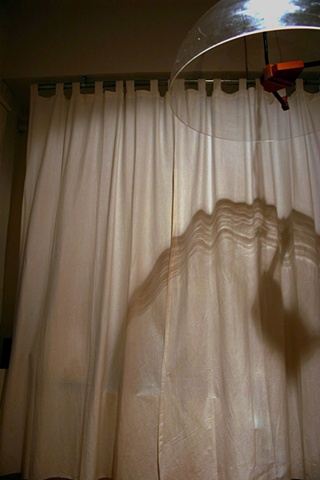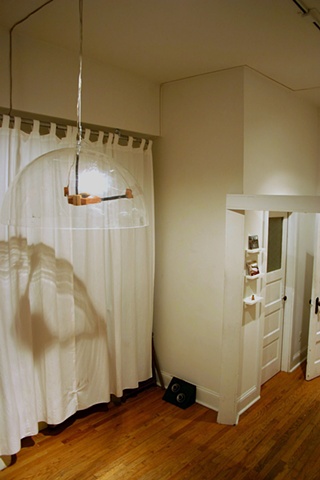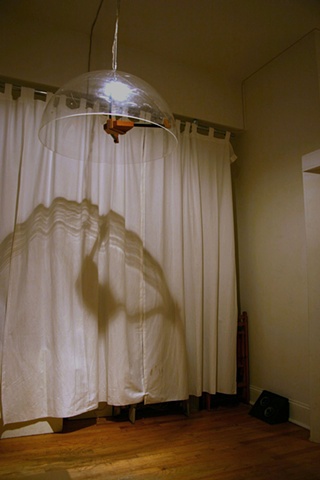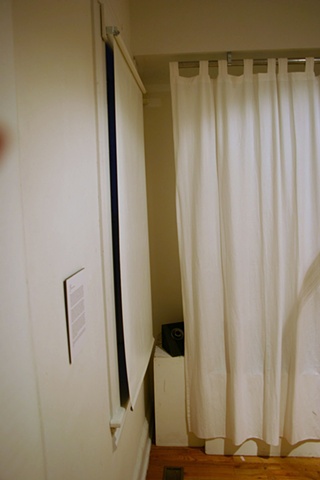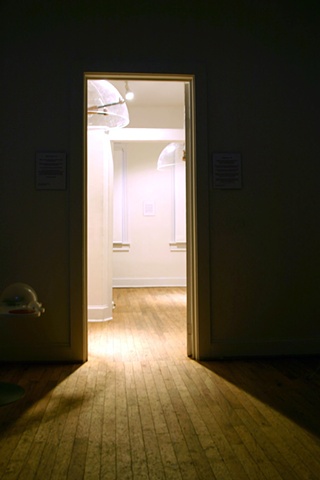palimpsest 2011
Palimpsest is a 3 channel audio installation exploring themes of mirroring in language and memory. Palimpsest uses two audio locations in the gallery that reflect aspects of each other, acting as both/neither past and present. The sonic elements deal in objective truth of language, but at the same time are highly subjective. Words give a specific meaning, but also convey a sense of loss or otherworldliness through their arrangement, sound and location. The audio reflects and folds in on itself as it moves away from the strict meaning of words, as repetition and free associations in time mine the unconscious for meaning.
A palimpsest is a manuscript page from which the text has been scraped off and which can be used again. Using this idea as a working method, the audio in Palimpsest is a digitally manipulated excerpt from Vladimir Nabakov’s novel Invitation to a Beheading. During his imprisonment, Cincinnatus C. uses writing to create an ideal world, indifferent to the vulgarity and absurdity of the one around him. The excerpt in Palimpsest, which expresses how a sentiment is beyond time and perceptions of the physical world, has been digitally manipulated to create a sense of the erasure and rewriting in perceptions and memory.
Mirroring and reflection exemplify the relationship between what is remembered and what is present. The transmission of thoughts and ideas is based on reiteration and repetition, with cues that allow for variation of pattern. These variations allow the rememberer to reconfigure thoughts in order to find their meaning in the present. Kuhreihen is a simple melody, forbidden to be played to Swiss mercenaries in the 18th century, as it was believed to cause a nostalgia to “the point of desertion, illness or death.” An apparent influence to Wagner’s romanticized vision of a Germanic past in the Rheingold Suite, an excerpt is used here to signify the idealized past.
Palimpsest is part of a larger examination of the quantification and perception of time; and the breaking down of structures to look at the significance of their sonic elements for the listener.
